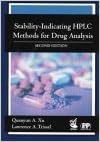Documentation for Stability Study Reports
Stability study reports are essential documents that provide a comprehensive overview of the study design, methods, results, and conclusions. These reports are submitted to regulatory authorities to demonstrate the quality, safety, and efficacy of pharmaceutical products over their intended shelf life. In this discussion, I’ll outline the key documentation that should be included in stability study reports.
Study Information
1. Product Details: Include the product’s name, strength, dosage form, and any relevant product codes.
2. Batch Information: Specify the batch/lot numbers and manufacturing dates of the samples tested.
3. Study Identification: Provide a unique study identification code for traceability.
Study Objectives
1. Study Objectives: Clearly state the objectives of the stability study, such as assessing the product’s stability under specific conditions.
2. Scope: Define the parameters and variables being evaluated in the study, including storage conditions and testing intervals.
Study Design
1. Study Plan: Describe the overall
study plan, including the testing schedule, time points, and conditions.2. Samples Tested: List the samples tested, including reference samples and batches.
3. Analytical Methods: Detail the analytical methods used to evaluate stability, including validation information.
Testing Conditions
1. Storage Conditions: Specify the storage conditions used in the study, such as temperature, humidity, and light exposure.
2. Excursion Handling: Describe procedures for handling excursions or deviations from specified storage conditions.
Results and Data
1. Data Collection: Provide data collected at various time points, including assay results, impurity levels, and physical characteristics.
2. Graphs and Tables: Include graphs and tables displaying data trends and variations over time.
Stability Profiles
1. Summary Tables: Present summary tables showing stability results for each time point and storage condition.
2. Degradation Pathways: Describe any observed degradation pathways and changes in quality attributes.
Statistical Analysis
1. Statistical Methods: Detail the statistical methods used to analyze stability data, including significance testing and trend analysis.
2. Conclusion: Summarize the statistical findings and their implications on product stability.
Discussion and Conclusions
1. Interpretation of Results: Interpret the data and discuss any trends, deviations, or unexpected observations.
2. Conclusions: State the overall conclusions about the product’s stability and potential shelf life.
Recommendations
1. Expiry Date: Recommend the expiry date for the product based on stability data and analysis.
2. Storage Instructions: Provide appropriate storage instructions for consumers based on stability findings.
Appendices
1. Raw Data: Include raw data collected during the study for transparency and review purposes.
2. Validation Reports: Attach validation reports for analytical methods used in the stability testing.
Regulatory Considerations
1. Compliance: Ensure that the stability study report complies with regulatory requirements and guidelines.
2. Data Integrity: Verify the accuracy and completeness of data to maintain regulatory credibility.
Conclusion
Stability study reports are critical documents that provide evidence of a product’s quality, safety, and efficacy over its shelf life. By including detailed study information, results, statistical analysis, and interpretation, manufacturers can demonstrate their commitment to ensuring product stability and compliance with regulatory standards.

